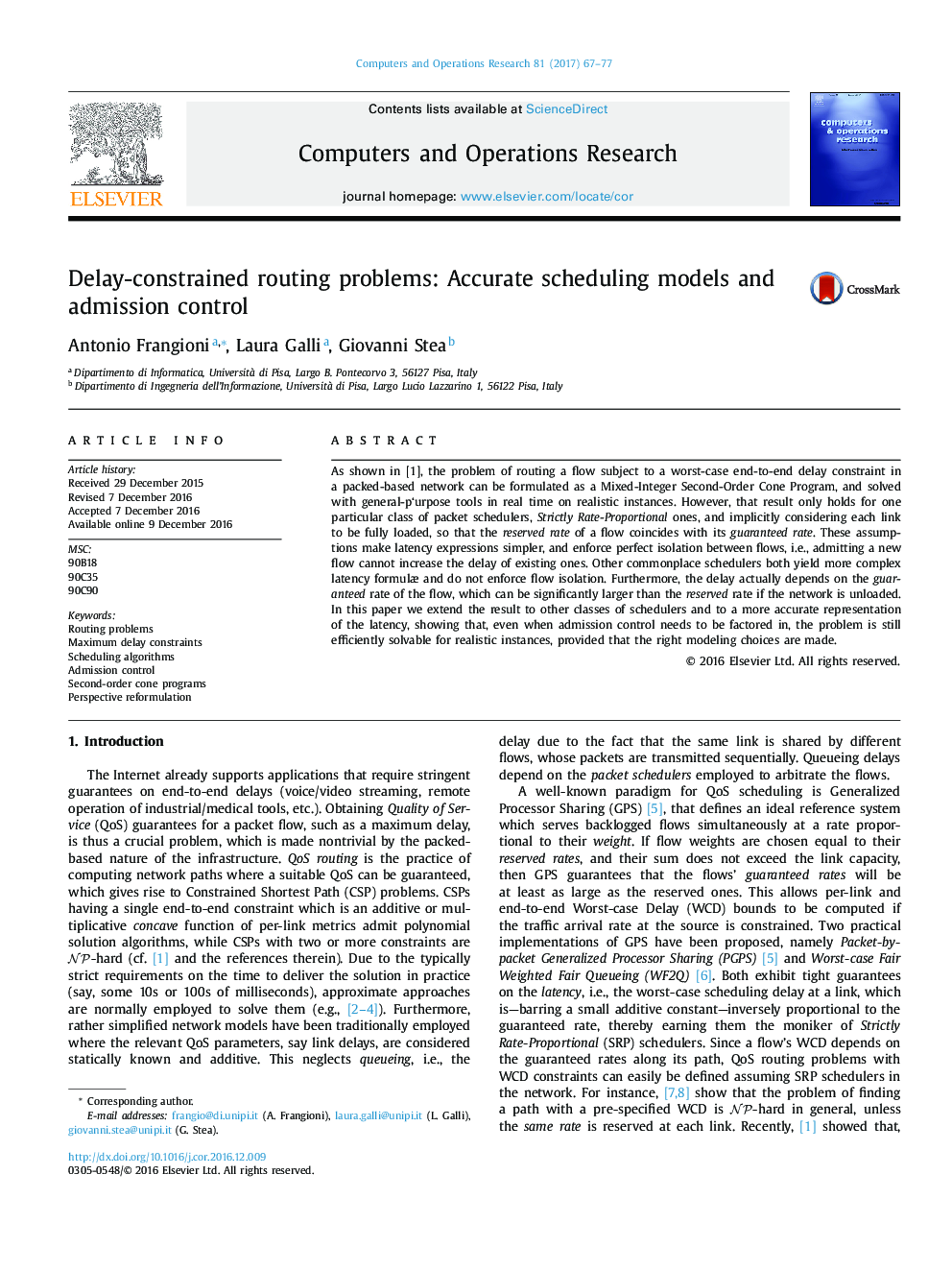| Article ID | Journal | Published Year | Pages | File Type |
|---|---|---|---|---|
| 4959061 | Computers & Operations Research | 2017 | 11 Pages |
Abstract
As shown in [1], the problem of routing a flow subject to a worst-case end-to-end delay constraint in a packed-based network can be formulated as a Mixed-Integer Second-Order Cone Program, and solved with general-p'urpose tools in real time on realistic instances. However, that result only holds for one particular class of packet schedulers, Strictly Rate-Proportional ones, and implicitly considering each link to be fully loaded, so that the reserved rate of a flow coincides with its guaranteed rate. These assumptions make latency expressions simpler, and enforce perfect isolation between flows, i.e., admitting a new flow cannot increase the delay of existing ones. Other commonplace schedulers both yield more complex latency formulæ and do not enforce flow isolation. Furthermore, the delay actually depends on the guaranteed rate of the flow, which can be significantly larger than the reserved rate if the network is unloaded. In this paper we extend the result to other classes of schedulers and to a more accurate representation of the latency, showing that, even when admission control needs to be factored in, the problem is still efficiently solvable for realistic instances, provided that the right modeling choices are made.
Related Topics
Physical Sciences and Engineering
Computer Science
Computer Science (General)
Authors
Antonio Frangioni, Laura Galli, Giovanni Stea,
